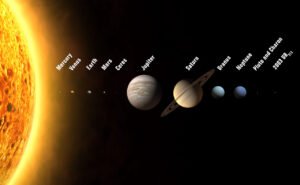Introduction: Lunar Month
To comprehend the concept of the Lunar Month, it is essential to understand how to read the lunar calendar. The lunar calendar is based on the position of the Moon in the sky, with each day represented by a tithi or lunar day. A tithi is a specific period during which the difference between the longitudes of the Moon and Sun changes by precisely 12 degrees.
The timekeeping system of the lunar calendar is based on the phases of the Moon, which makes it a reliable and widely used system in many cultures and traditions worldwide. The lunar calendar is an essential tool for tracking religious and cultural events and for agricultural purposes, such as planting and harvesting crops. By learning to read the lunar calendar, we can better understand the natural rhythms of the world around us.
Importance of Lunar Month in Astrology
In the Hindu calendar, a new lunar month of 30 tithis, or lunar days, begins when the Sun and Moon are in the same position in the sky. As the days go by, the Moon moves ahead of the Sun. When the Moon’s position in the sky is precisely 12 degrees ahead of the Sun’s, the first tithi ends, and the second tithi begins.
This means that each tithi is approximately 12 degrees wide. The Hindu calendar is a complex and precise system used centuries to determine essential events, such as festivals and auspicious days for weddings and other ceremonies. The calculation of tithis is a crucial part of this system, and it is based on precise astronomical observations of the positions of the Sun and Moon in the sky.
In Vedic astrology, a tithi refers to a lunar day or the time it takes for the Moon to travel 12 degrees ahead of the Sun. The Sanskrit word “tithi” means “date” or “day,” and it is an essential element in calculating the Hindu lunisolar calendar.
The tithi cycle consists of thirty phases, starting from the first tithi, Pratipada, and ending with the thirtieth tithi, Amavasya. Each tithi lasts for approximately 24 hours, with the exact duration varying based on the Moon’s position and other astronomical factors.
When a tithi concludes, the next one commences when the Moon is precisely 12 degrees ahead of the Sun. This sequence continues with the Moon moving 24 degrees, 36 degrees, and so on, ahead of the Sun for each subsequent tithi. As a result, after n tithis, the Sun-Moon position differential will be precisely 12n degrees. This predictability and rhythm of lunar months in astrology reinforce the significance of tithis as a crucial aspect of Vedic astrology.
Also Read: Understanding Indian Astrology

In the lunar calendar, a month comprises of 30 tithis, or lunar days. Each month is further divided into two fortnights, known as pakshas. During the Sukla or Suddha paksha, also known as the brighter fortnight, the Moon is waxing, which means it appears to be increasing in size.
During this phase, the Moon is positioned ahead of the Sun at an angle ranging from 0º to 180º. On the other hand, during the Krishna paksha or the darker fortnight, the Moon is waning and appears to be decreasing in size. During this phase, the Moon is positioned ahead of the Sun at an angle ranging from 180º to 360º.
At the end of the month, the Sun-Moon longitude differential will equal 360°, which means that the Moon will have completed one cycle around the zodiac and caught up with the Sun once again. This marks the beginning of a new month.
Lunar Month
This information explains the lunar calendar and how a new lunar month starts. According to this calendar, a new lunar month begins whenever the Sun and the Moon have the exact longitude. After this point, the Moon starts to move ahead of the Sun, and after approximately 29-30 days, it catches up with the Sun again, marking the start of a new lunar month.

These lunar months have special names, based on the rashi in which the Sun-Moon conjunction occurs. For instance, if Sun-Moon conjoins in Pisces, the month is called Chaitra masa. These names come from the constellation that the Moon will most likely occupy on the full Moon day. In the month that starts when the Sun and Moon conjoin in Pisces, the Moon is likely to be in the Chitra constellation, which spans from 23°20′ in Virgo to 6°40′ in Libra, on the full Moon day (15th tithi – Pournimasya). This is why the month is called Chaitra.



